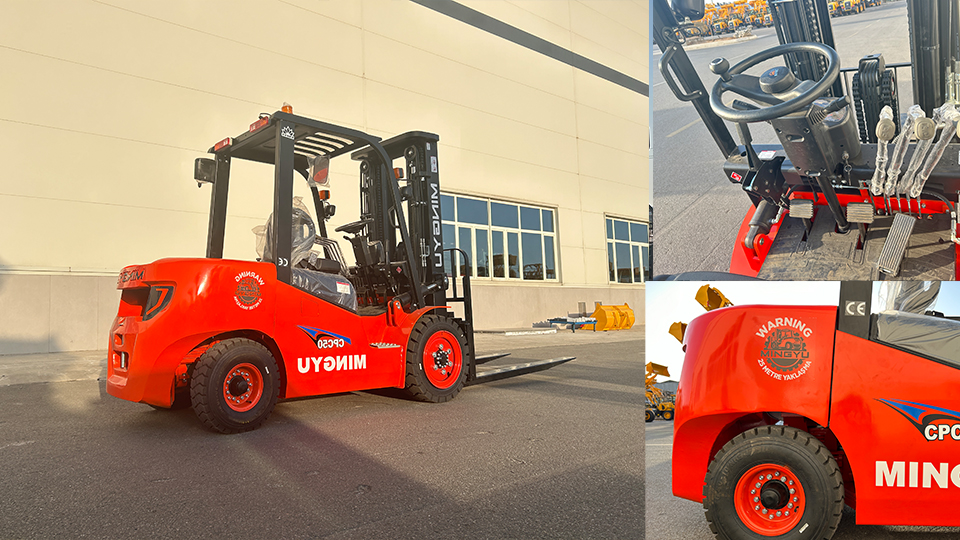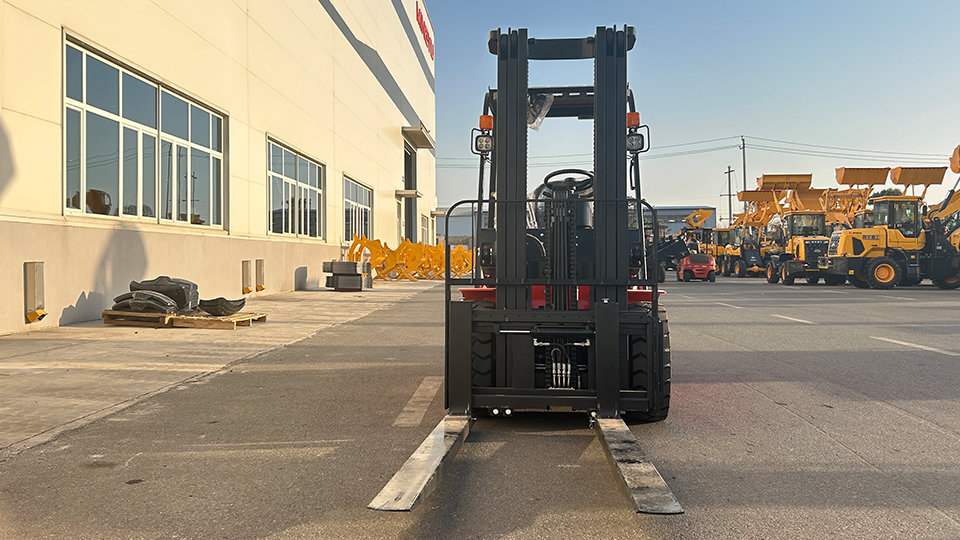
I. Introduction: Deconstructing the "Forklift License" Myth
In the world of logistics and material handling, the forklift operator is king—or at least the gatekeeper of efficient flow. Acquiring a forklift certification, often casually called a "forklift license," is not merely a formality; it is a legally binding statement of competence required by regulatory bodies like the Occupational Safety and Health Administration (OSHA) in the United States.1
However, the path to certification is often obscured by expensive commercial training programs. This article provides a definitive, technical breakdown of the OSHA standard, 29 CFR 1910.178(l), and presents a strategic, step-by-step method for achieving full legal compliance while minimizing your personal financial outlay.
The central truth is this: OSHA does not issue the certification; your employer does. The strategy, therefore, is to provide the employer with compelling evidence of your preparedness to compel them to complete the legal process.
II. The Legal Foundation: OSHA’s Three Pillars of Certification
The entirety of your certification rests on the successful completion of a rigorous, three-part process mandated by OSHA.2 Understanding these three pillars is the key to unlocking the most cost-effective path.
A. Pillar 1: Formal Instruction (The "Classroom" Component)
This is the theoretical knowledge base. It is the component most easily satisfied through self-study or online learning. The instruction must cover the fundamental principles of safe operation, including:
Truck-Related Topics: Operating instructions, warnings, controls, engine/motor operation, steering/maneuvering, visibility, fork and attachment use limitations, vehicle capacity, and vehicle stability (the most critical and often misunderstood aspect of lift truck physics).3
Workplace-Related Topics: Surface conditions (e.g., ramps, wet floors), load stacking, pedestrian traffic, narrow aisles, operating in hazardous locations, and other site-specific factors.4
Inspections and Maintenance: Operator-level inspections required before operation (pre-shift checks) and when to remove a truck from service.5
Legal Requirement: OSHA requires this training to be a combination of lecture, discussion, interactive computer learning, video, or written material.6 Crucially, it does not have to be paid for, provided by, or even conducted by a professional training company.

B. Pillar 2: Practical Training (The "Hands-On" Component)
This phase involves supervised practice with the specific type of Powered Industrial Truck (PIT) the operator will be assigned to use.7 It must be conducted in a safe, non-hazardous environment.
Demonstration: A qualified trainer must demonstrate the correct procedures for all operational tasks.8
Exercises: The trainee must then perform these tasks, such as stacking, unstacking, maneuvering, and parking, under the direct supervision of the qualified person.9
C. Pillar 3: Performance Evaluation (The "Competence Test")
This is the final hurdle. A qualified person must observe the operator demonstrating competence in all operational aspects while working in the actual workplace.10 This step confirms the operator can apply the theoretical knowledge and practical skills safely and effectively in the actual operating environment.
The Certification Act: Upon successful completion of all three pillars, the employer must issue a formal certification record. The employer is the sole issuer of the legally recognized certification.11 This document must include the operator's name, the dates of training and evaluation, and the name(s) of the person(s) who performed the training and evaluation.12
III. Phase I: Eliminating the Cost of Formal Instruction (Near-Zero Cost)
The financial bottleneck in getting certified is typically the cost of the formal instruction. By strategically leveraging free online and governmental resources, you can complete Pillar 1 with only the cost of your time.
1. Leveraging OSHA-Compliant Free Online Content
Numerous reputable platforms offer the content required for formal instruction at no charge.13 The goal here is to acquire the knowledge and, most critically, verifiable documentation of your efforts.
|
Platform |
Course Offering (Example) |
Key Strategy for Free Access |
|
OSHAcademy |
Forklift Certification (Course 620) |
Free access to all training materials, quizzes, and the final exam. Ignore prompts to purchase the official certificate; document your passing score. |
|
Alison |
Forklift Operator Training |
Provides free course access and full content. You may pay for a certificate, but the educational content is free. |
|
SC Training (SafetyCulture) |
Forklift Operation Safety |
Often structured as micro-learning modules. Free access to the content satisfies the instruction requirement. |
|
Workhub |
Lift Trucks/Forklifts Free Training |
Provides the formal instruction component and often offers a free proof of completion document/certificate. |
Technical Documentation Strategy:
Self-Paced Learning: Dedicate a specific, documented amount of time to the self-study.
Evidence Collection: Take screenshots of your course completion pages, module summaries, and, most importantly, the passing scores for any final exams (even if you decline the paid certificate).
Syllabus Cross-Reference: Download the course syllabus (if available) or create a personal log referencing the specific OSHA standards (e.g., stability, load capacity) that were covered. This proactive documentation is your leverage with a future employer.
2. Utilizing Government and Manufacturer Resources
Government agencies provide the knowledge base directly, fulfilling the formal instruction requirement in a technically rigorous manner.
OSHA Powered Industrial Truck eTool: This resource is the regulatory text in guide format.14 Studying the sections on truck types, training, stability, and load handling directly meets the theoretical requirements of the standard.
Manufacturer Manuals: Download the operator and maintenance manuals for common PIT classes (e.g., Class IV/V—Sit-down Counterbalance, Class III—Electric Pallet Jack). These are legally required to contain safety instructions that must be covered in training.

Training Log Creation: Maintain a meticulous Self-Study Log. Document the date, time spent, specific topics covered, and the resource used (e.g., "Oct 27, 2025: 1 hour, OSHA eTool: Stability Triangle and Load Center, 29 CFR 1910.178(l)(3)(i)(K)").
This detailed log is your proof that you have fulfilled Pillar 1. You are now a "pre-trained" candidate.
IV. Phase II: Transferring the Burden of Practical Training (The Employer Obligation)
This is the most strategic phase. Since practical training requires access to expensive equipment and a qualified supervisor, the cost is virtually impossible for an individual to eliminate. The solution is to transfer this legal obligation to the entity required to provide it: the employer.15
3. The Employer Obligation Strategy
OSHA is unequivocal: "The employer shall ensure that each powered industrial truck operator is competent... as demonstrated by the successful completion of the training and evaluation..." (29 CFR 1910.178(l)(1)(i)).16
Your goal is to become the most attractive and cost-effective hire.
Targeting Employment: Focus on entry-level material handler, warehouse associate, or general labor positions that state, "Forklift certification preferred, not required" or "Willing to train." These companies have an immediate need and a budget for training.
The "Pre-Trained" Pitch: In your resume and interview, do not claim to be fully certified. Instead, use language like:
"I have successfully completed all required OSHA-compliant Formal Instruction for Powered Industrial Trucks, covering 29 CFR 1910.178(l) standards."
"I possess the theoretical knowledge and documentation to prove it. This completion significantly reduces the time and administrative cost for the company to fulfill the final Practical Training and Performance Evaluation steps required for certification."
Quantifying the Value: By completing Pillar 1 (which often takes commercial training centers half a day), you are saving the employer time and money. This makes you a more compelling candidate than an applicant with no preparation.
4. Leveraging Government and Community Subsidies
The government often provides grants and funding to solve the Pillar 2 problem for job seekers.
Workforce Development Boards (WDBs): Local and state agencies (often branded as WorkSource or Job Centers) frequently receive federal grants (e.g., through the Workforce Innovation and Opportunity Act – WIOA).17
Actionable Step: Contact your local WDB and ask about training vouchers, non-credit adult education courses, or grants for "Powered Industrial Truck" or "Occupational Safety" certificates. These programs are often fully subsidized and include the necessary hands-on component with a performance evaluation, leading to a full, legal certification at zero cost to you.
Non-Profit Vocational Programs: Organizations like Goodwill or The Salvation Army often run vocational training programs that include the expensive practical component as part of their community mission.18 These programs exist to transition people into the workforce and absorb the cost of training.
5. Negotiating the Practical Component with Small Businesses
For a small employer, the "qualified person" does not need to be a third-party trainer. They only need to be an employee (like a warehouse manager or experienced supervisor) who has the "knowledge, training, and experience to train powered industrial truck operators and evaluate their competence."19
The Practical Trial Pitch: Once hired as a "pre-trained" candidate, you can proactively propose a structured, supervised practical training period. Provide the supervisor with your completed self-study log (Pillar 1 documentation) and propose a clear timeline for the practical exercises and final evaluation. This makes it easy for the employer to meet their compliance mandate.
V. Phase III: Formalizing and Maintaining Your Certification
Once you have successfully completed the first two phases (Formal Instruction and Practical Training/Evaluation), the final steps ensure the certification is legally sound and remains valid.
6. The Legal Certification Record (The Proof)
The certification is only legally valid if the employer documents it. This is your most important piece of paperwork. The employer is legally required to maintain a record containing:
Operator’s Name: Your official name.
Date of Training: The date(s) for the Formal Instruction (Pillar 1) and Practical Training (Pillar 2).
Date of Evaluation: The date the qualified person performed the final Performance Evaluation (Pillar 3).20
Name(s) of Person(s) Performing the Training and Evaluation: The signature and printed name of the qualified supervisor(s).21
Identity of the Equipment: The type or class of Powered Industrial Truck (PIT) on which you were trained (e.g., Class I, IV, V—Sit-down Counterbalance).
Critical Step: Always request a signed, legible copy of this final certification record for your personal file. The wallet card is a convenience; this full document is the legal record.
7. Understanding and Securing Recertification
Forklift certification is not a lifetime credential. OSHA requires an operator to be re-evaluated at least once every three years (29 CFR 1910.178(l)(4)(iii)).22
Furthermore, refresher training and re-evaluation are required sooner if:
The operator is involved in an accident or a near-miss.23
The operator is observed operating the truck in an unsafe manner.24
An evaluation reveals the operator is not operating the truck safely.25
The operator is assigned to operate a different type of truck.26
A change in workplace conditions affects safe operation (e.g., a new rack system, a major floor repair).
The Zero-Cost Recertification Strategy: By securing employment in a role that requires your certification, you have effectively secured zero-cost recertification. The legal burden to provide the three-year refresher training and re-evaluation—at the employer's expense—remains on them, perpetually maintaining the value of your credential throughout your tenure.
VI. Technical Conclusion
Achieving a legally compliant forklift operator certification without commercial training fees is a masterclass in leveraging regulatory compliance. It requires diligence in self-documentation (Pillar 1) and strategic positioning in the job market to compel the employer to meet their explicit legal mandate for hands-on training and final evaluation (Pillars 2 and 3). By viewing the OSHA standard 29 CFR 1910.178(l) not as a hurdle, but as a roadmap for cost-free professional development, you bypass the prohibitive costs and secure a high-value, fully compliant credential.
Now, if you'll excuse me, I need to check my stability triangle... it's looking a little tipsy.
Would you like me to find the contact information for the Workforce Development Board (WDB) in your area to help you start Phase II?
Name: selena
Mobile:+86-13176910558
Tel:+86-0535-2090977
Whatsapp:8613181602336
Email:vip@mingyuforklift.com
Add:Xiaqiu Town, Laizhou, Yantai City, Shandong Province, China